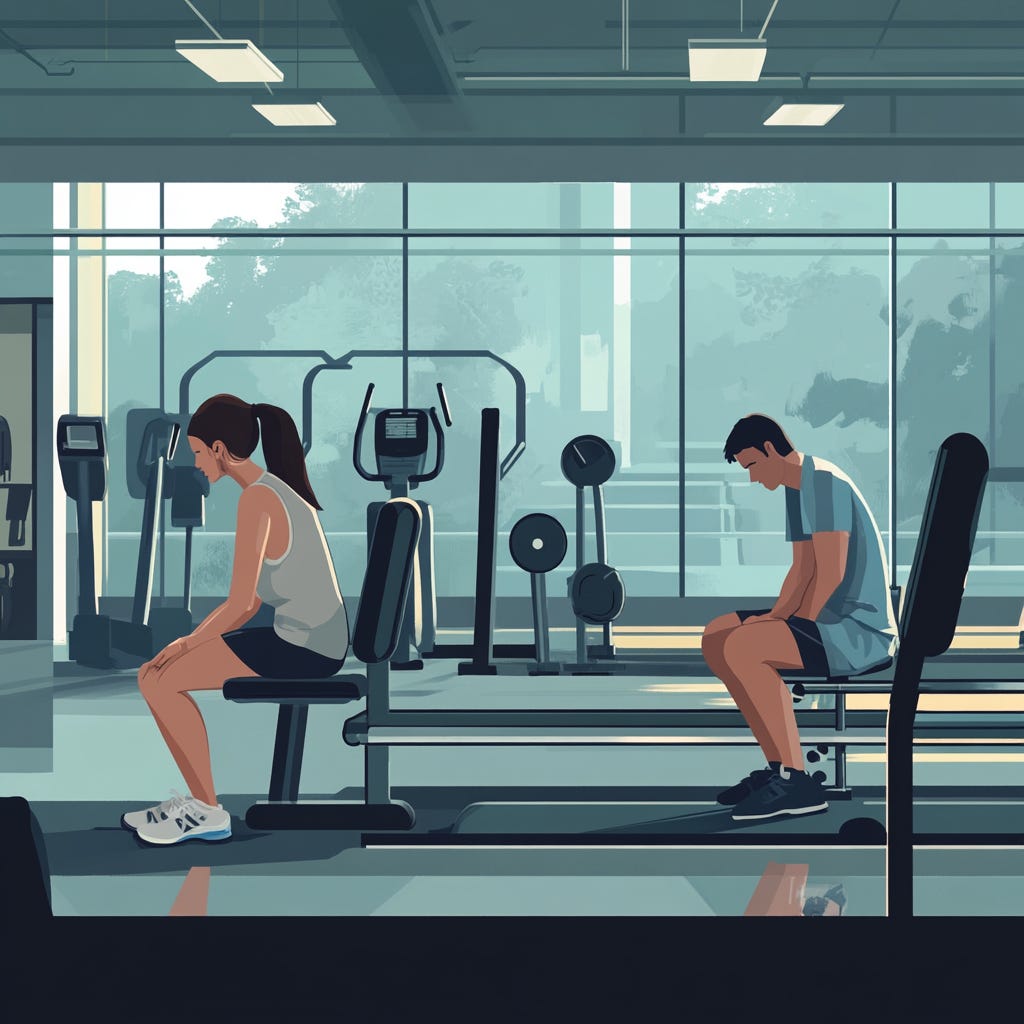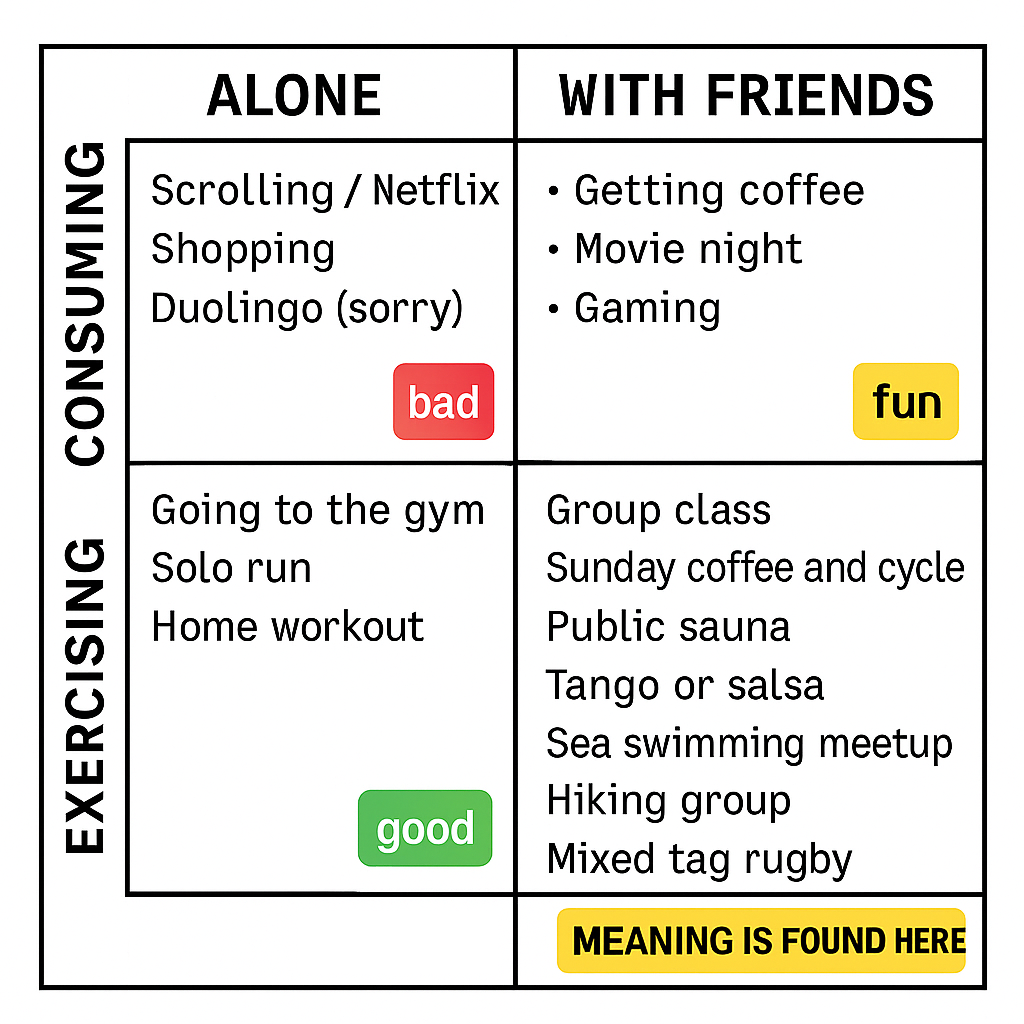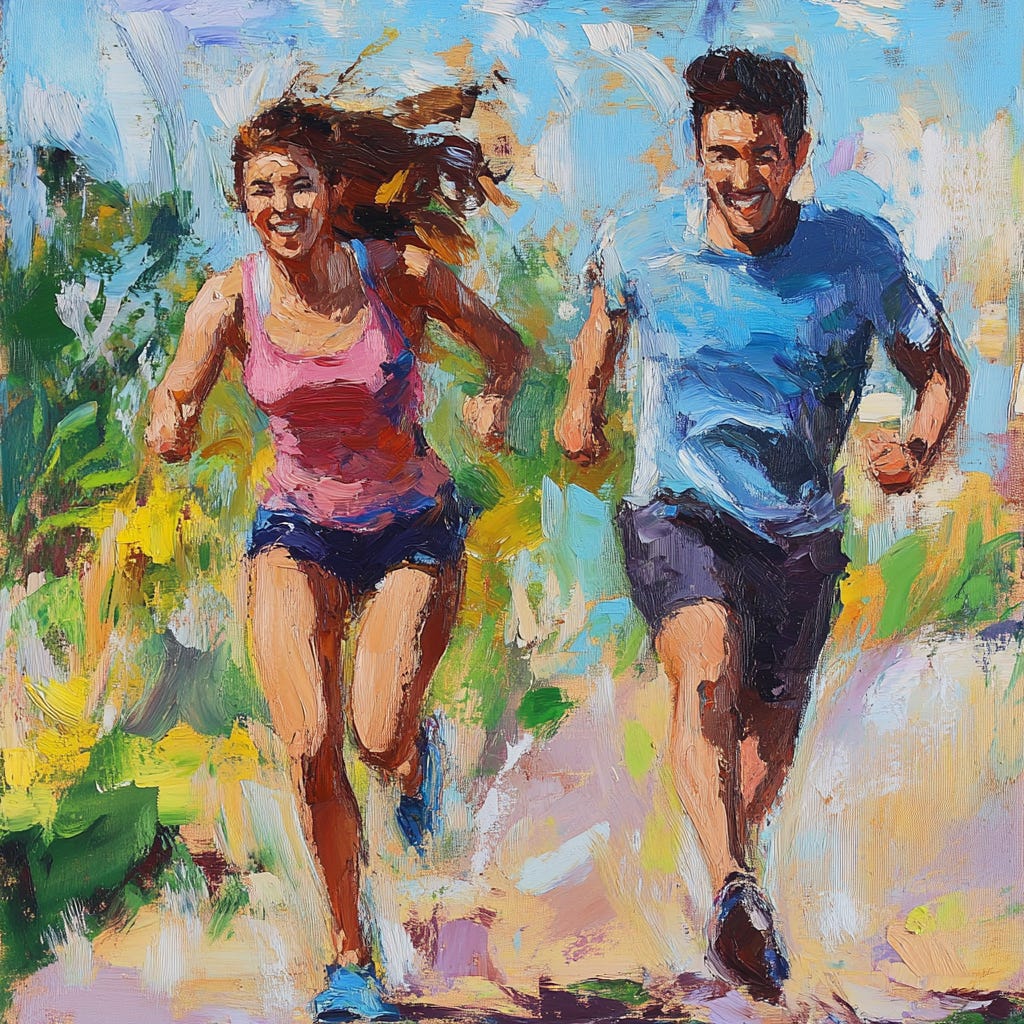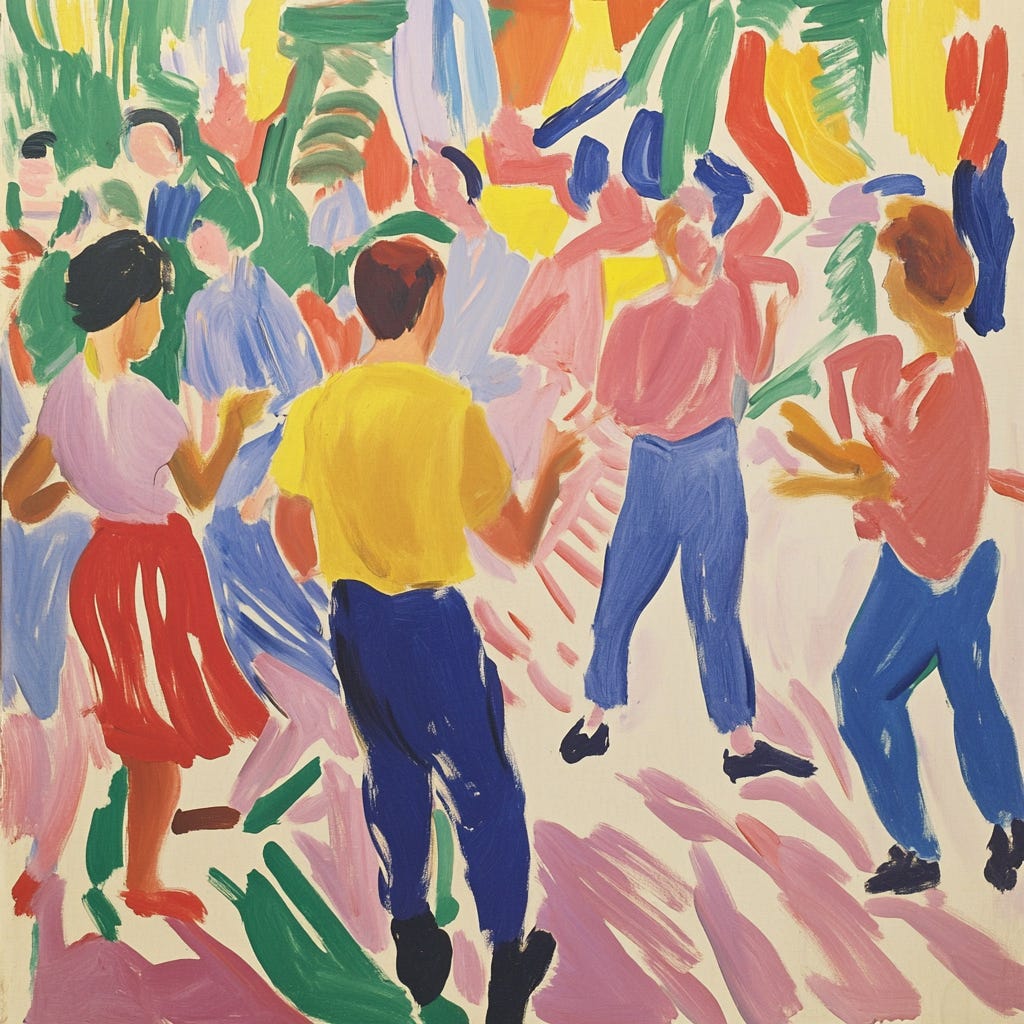Greetings from Dublin, and a warm welcome to all new subscribers who landed here from last week’s issue, ‘The Golden Age of Solo Travel Is Over.’ I hope you enjoy this week’s writing, a reflection on how I spent too much ‘dead time’ in my youth, in the gym.
Gentle Reader,
When I was a teenager, I couldn’t wait to join a gym and so, as soon as I turned 16 and was allowed to become a member, I signed up straight away.
Pretty quickly, I learned everything I could about protein and sets and reps and progressive overload. The first training program I ever did was Mark Rippetoe’s 3x5, a strength program which emphasised the basics. After every session I used to stand outside the gym, waiting for one of my parents to collect me, drinking milk by the litre and planning the next workout.
I can’t exactly say what my motivation was at that time, but I’m pretty sure it stemmed from some kind of hidden and displaced feeling of physical inadequacy, as I was always the skinny kid.
Besides, since I had gone to an all-boys primary and secondary school, I was aware that social capital in those environments mostly derived from sporting abilities, which were related to strength, muscularity and athleticism, and I knew that the gym was a place where you could become strong and athletic.
After a few years however, or maybe even sooner, I suspect that this desire transmuted itself into a wish to become more attractive to women, in tandem with the rise of the Instagram era, and general societal expectations.
In the end, I did develop a body which was strong and fit, and I’m still really interested in functional strength (to the extent that I will be putting on my doctor hat and starting another publication called ‘life is a lower body sport’ this week).
But I didn’t understand that all that time in dark gyms was dead time, headphones on, scrolling between sets, and if I had my time again, I would spend it differently…
Gyms are dark places, physically and spiritually. There is a lot of negative energy in them. The music is loud, the lighting artificial, and the overall atmosphere is one of testosterone-fuelled alpha energy, of posturing, of furtive looks and showman (and woman)ship.
They are also quite weird. Imagine if you showed our ancestors a video clip of people working out in a modern gym. They would say, ‘Why is nobody talking to each other? What are those things they are lifting and what do they have to do with every day life? Why are people running on machines instead of outside?’
But gyms are also a safe haven for many people, especially people with social anxiety. You can go to a gym and be amongst people without having to talk to them, all while improving yourself or improving your physique.
There is a meme called ‘See you in the gym, bro’ which describes the kind of pain and agony experienced by a man who has been rejected or betrayed. Many in the gym are working through this, working through fear and a sense of not-enoughness.
A lot of these guys and gals are carrying this sense that once they reach a certain bench press, a certain weight, a certain level of flexibility, they will be good enough.
Ironically, they might be better served spending their time elsewhere.
Yet, having said that, all of this negative energy is not the reason I would do things differently, if I were twenty-something Edward once again.
The gym itself isn’t a problem. In context, however, we can see its limitations.
Going to the gym is an extremely efficient way to get fit and strong, but I don’t think it’s an extremely effective way to stay sustainably healthy, or generally to build the life you want to build, because it’s not a holistic approach.
Let’s face it: most people are going to the gym because, at some level, it alllows them to feel that they are bettering themselves. If you have swallowed the self-improvement kool-aid, and you have nothing else to do on a given Tuesday evening, you probably have a gnawing feeling that you ‘should’ be in the gym.
I am here to tell you, however, that there is another way.
When you workout in a gym, you get the benefit of improving your health in a very fragmented way, and you miss out on the holistic and dimensional benefits which can be accrued in other ways.
Let’s look at this chart from Ben James (h/t).
This chart recommends spending your time in quadrant 4, where you can derive meaning and be creative at the same time, and generally get more bang for your buck with how you spend your time.
Let’s adapt this to exercise:
You get the benefits of dimensionality: exercising while also meeting people, creating meaning, and strengthening existing bonds.
Couples understand this better than singletons – they find ways to spend time together, to do activities which are enriching and which develop their relationship, while exercising or learning.
This idea of adding dimensionality be applied to anything. For example, you can and should eat in a creative, meaningful and social way (dinner parties, pot luck, restaurants). Even more simply, you can drink coffee in a cafe instead of at home. You can read a newspaper in a library. You can say hi to a stranger on the bus instead of looking at your phone.
When you start to operate like this, you fight back against the increasing siloisation and fragmentation of modern existence. As it stands, people go to the gym to work out because they don’t embroider exercise into their social routine; they go to the park to enjoy a green space modern urban environments haven’t woven trees and flowers and grass into the fabric of our cities; they develop a work persona which must be upheld because their ability to survive depends on corporate success.
These social problems can’t all be solved by a Sunday cycle with friends, by a Friday night tango or by going rock climbing every Wednesday evening, but those kinds of approaches are a start to a more integrated life.
Besides, everybody knows that running or cycling outside is much nicer than using a treadmill or stationary bike, so you will have more fun, too.
And, you can still go to the gym, if you want (I still do). There’s just no reason to be there every day, if you’re not a professional athlete.
If I could talk to sixteen year old Edward, I would advise him to keep working out, but I would tell him that there would come a point, very soon, of diminishing returns, and that if you’re trying to seem attractive to women, they actually prefer a guy with balanced hobbies to a guy whose ‘hobby’ is the gym.
At that stage, you have to ask yourself, is this the best use of your time? You don’t make memories in the gym. The best things happen with friends, in shared contexts, in motion – when you are learning and growing together.
Thanks for reading. I am also starting another publication, ironically, on working out. You will find it here. Click below to subscribe to the current publication.
Affiliates:
My friend Paul Millerd runs the Pathless Path Community, a cozy online space where we support each other to find ways to live and work in the most authentic way possible.
I also recommend the Supernote e-ink device, which I use for reading, writing, and annotating documents. This affiliate link is only valid for EU customers.
.png)









